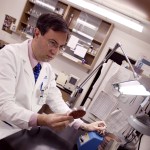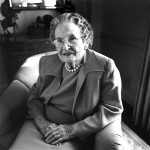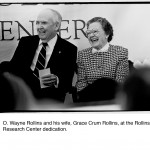Dr. Carlos del Rio possesses a keen view of how the novel H1N1 virus emerged last spring. Del Rio was in Mexico as the virus established itself south of the border. Its rapid, far-reaching spread marked the first influenza pandemic of the 21st century.
During Emory’s fifth annual predictive health symposium, “Human Health: Molecules to Mankind,” del Rio discussed his experiences in Mexico, what we’ve learned, and what novel H1N1 has to do with predictive health. View a video of his presentation and five lessons learned.Â
Only a day after the virus was identified, on April 23, Mexican authorities closed schools, called off sporting events, and canceled religious gatherings. Known as “social distancing,†these actions led to a decrease in cases, an important lesson, says del Rio. The public knew what to do, they were cooperative, and what’s more, they applied a lot of peer pressure when it came to hand washing and sneezing hygiene.
Another lesson learned: preparation paid off. Anticipating a pandemic, The World Health Organization had earlier mandated that countries draw up influenza pandemic plans. “Those plans were incredibly helpful in getting people to work together, communicate, and know what to do,†says del Rio. Interestingly, the plans in Mexico and the United States were aimed at a virus projected to originate from an avian source from southeastern Asia. “It was not developed for a swine virus coming from inside the country,†explained del Rio.
Novel H1N1, even though it’s thought of as a swine virus is in fact only about 47% swine–30% from North American swine and 17% from Eurasian swine. The virus also contains human and avian strains. That’s important, says del Rio, because the characteristics of its genes determine how symptoms, susceptibility, and immunity manifest themselves.
“What we’re seeing nowadays is the new strain has crowded out the seasonal influenza virus,†he says. Thus far, most of the deaths from novel H1N1 have been in children, young adults, and pregnant women. “The people who are dying are a very different group than in previous flu seasons,†says del Rio.Â

Carlos del Rio, MD
Del Rio says a lot was learned early on about the novel virus thanks to frequent and transparent international communication. This flu pandemic is really the first to occur in this era of 24-hour newscasts and the Internet. So there’s a challenge for health workers: how do you continue to communicate in an effective way. “One thing you say one day may be contradicted the next day because you have new information. How do you make people understand that you weren’t lying to them before, but you have updated information and that information is continuously changing.”
In trying to predict what’s in store for the current flu pandemic, researchers are looking back at past pandemics. Last century, there were three major flu pandemics. The largest and most important was the 1918 pandemic.
“A couple of things that happened back then are very important: one was there was a second wave that was actually much more severe and much more lethal than the first one.†says del Rio. “And over the summer, the virus actually changed. It started very much like it did this time. It started in the spring and then we had a little blip, and then we had a big blip in the second wave, and then almost a third wave. So, clearly influenza happens in waves, and we’re seeing the same thing happening this time around.â€















